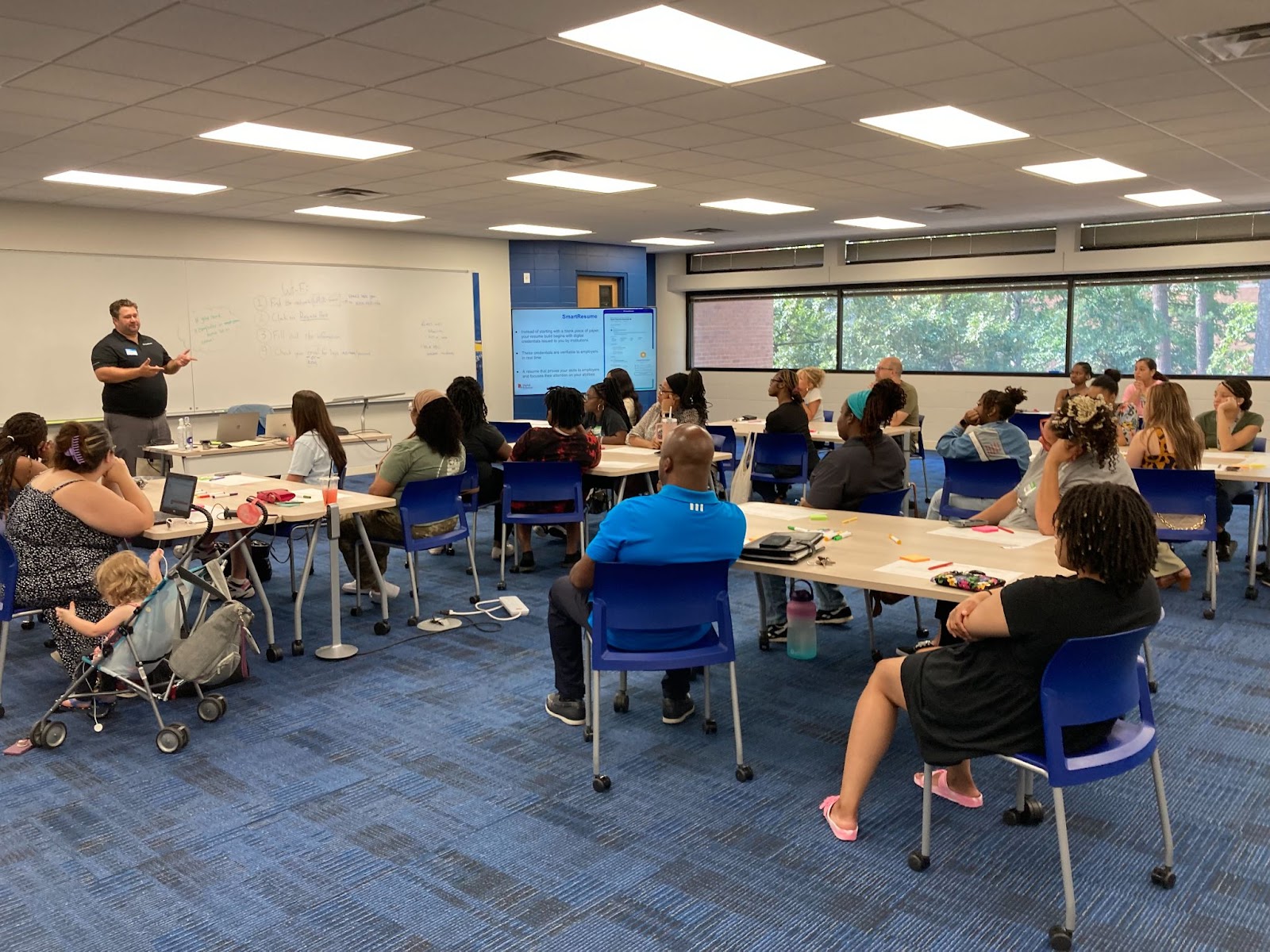

Ian Davidson from SmartResume welcomed users to the design session in Little Rock, Arkansas.
How might we design equitable and inclusive Learning and Employment Records (LERs) that successfully onboard historically and systematically excluded (HSE) learners and workers?
In partnership with two LER vendors, LearnCard and SmartResume, our report, Onboarding and Education Design Principles for Learning and Employment Records sought to address this question through a series of co-design sessions. Together, we invited existing and potential users of their technologies to participate in an LER onboarding co-design session. Each session had four objectives:
In June of 2023, we engaged with dozens of learners in two live design sessions. During each session, users built a community, explored an LER tool, and shared their reflections in deep dive conversations on user experience and the technology’s value proposition.
Key learnings from each session are synthesized in design principles outlined below.
The Center for Intersectional Justice defines intersectionality as the ways in which systems of inequality based on various forms of identities intersect, which create unique dynamics. The power of intersectionality is that it highlights the special complexities, skills, and experiences that each person brings into a space. It is important to design with an eye toward the intersectional identities and experiences of users to ensure that the tools are useful and adaptable to the ever-changing and evolving needs in their lives.
The need for designing with intersectional users’ experiences and identities in mind was evident in the co-design sessions. For example, participants shared thoughts, such as:
A barrier to many learners and workers, particularly those from HSE communities, is finding ways to maximize their time when searching, applying, and preparing to interview for new education and workforce opportunities. To address the need for maximizing time, many LER vendors make integrating transcripts, awards/recognitions and experiences more accessible for their users. The co-design participants were most impressed by this feature.
“ Having everything from my transcript made it easier to jump into the tool.”
However, several users emphasized the importance of ensuring that their information was being presented accurately. Providing users the ability to control their data can ensure that the information is accurate and relevant to their evolving needs.
Vendors have an incredible opportunity to design LERs that serve HSE learners and workers across generations. This is evident from the SmartResume design session which included participants from high school to a professional who had over 40 years of work experience, and many in between. This group included intersectional diversity across the board, and the power of that session is that the tool resonated with every person.
Designing for intergenerational engagement allows LERs to increase their impact and reach a larger audience because it follows its users throughout their learning journey. Further, it motivates the vendor to be proactive about improvements and iterations and provides more opportunities for conversations across generations.
As vendors look to expand the impact of their tools, it is important that they honor user intersectionality, provide users ownership of their data, and design with intergenerational adoption in mind—especially during onboarding. More information can be found in the full report, Onboarding and Education Design Principles for Learning and Employment Records. To get involved, please contact lei@digtialpromise.org.